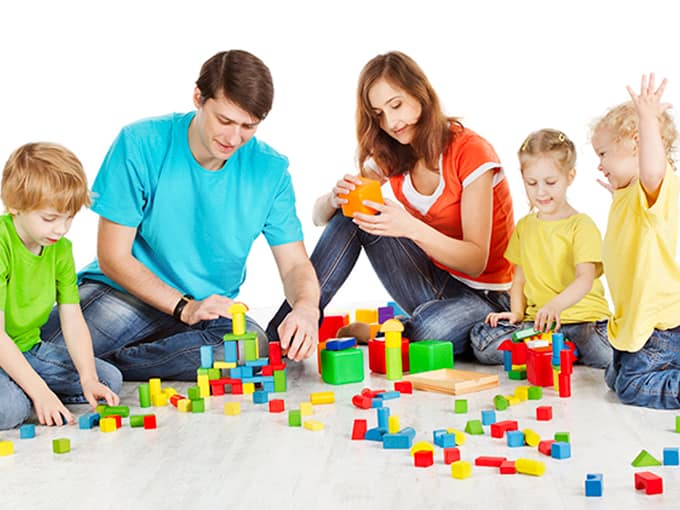Creativity for Kids

Creativity for Kids: Tips for Nurturing Creative Minds
Below are tips and suggestions for nurturing your child’s imagination and creativity:
- Spend time outdoors. The benefits of nature for child development are endless. Because nature is ever-changing, it provides countless opportunities for discovery, creativity, and problem-solving. The natural world inspires children to think, question, make suppositions, and develop creative minds. Children can draw in sand, make designs with twigs, build forts with branches, or lie on the ground and look up at the sky.
- Invent scenarios. When your child invents a scenario, he tries many different roles and organizes his thoughts while developing social and verbal skills. Encourage your child to play house, doctor, zoo, farm, space station, school, or store. Join in the imaginative play by taking on a role yourself. Play with stuffed toys or puppets (make simple puppets by putting your hand in a sock). Let your child lead your playtime together. If your child is into superheroes, think of the power your child might want as his superpower feeling. Consider having your child create a new superhero!
- Verbal activities. From rhymes to riddles, silly sounds to phonics, games such as “I Spy” or making up lyrics to standard tunes, verbal interactive activities can inspire and nurture creative minds. Simultaneously, these activities build vocabulary and help your child learn phonics. These games are also the perfect and fun way to spend time on car rides.
- Encourage art activities. Art is a creative expression that nurtures imagination, not a lesson in following directions. Through painting, sculpture, collage, clay, drawing or any other medium, art is a way for children to work through emotions, make decisions, and express their ideas. Manipulating art materials provides a sense of freedom yet also encourages focus and concentration. Art activities also develop fine motor skills and hand-eye coordination. Furthermore, art activities build confidence because children gain a sense of mastery over materials, resulting in a new creation.
- Share literacy activities. Make reading time memorable and discuss the story’s possible scenarios or endings using your child’s imagination. Makeup stories with your child, sometimes with her as the main character; other times, propose moral dilemmas. Take turns making up a continuing story.
- Ask open-ended and thought-provoking questions. Asking questions that provoke imaginative and creative thinking is an effective way to invite your child to express his ideas and share his visions while giving him the message that his ideas are important. “What do you think would happen if….?” “What’s the difference between a dog and a cat?” “What are some other ways to do this?”
- Limit screen time (television, movies, computers, tablets, smartphones, handhelds, video games, etc.). Nurturing imagination and parenting in the digital age can be challenging. Focusing on a screen is a passive way of learning for children. An alternative would be to encourage children to create something new and different. Engaging children in a kinesthetic manner using their entire bodies and their five senses also opens the mind.
- Remember to allow for downtime. Unstructured, unscheduled time allows children opportunities to imagine and create.
Early childhood is the peak time to nurture children’s imaginations. So if your child comes home and says, “…and then we drank purple milk that came from a purple cow,” or something similar, offer encouragement for their creativity and imagination.
